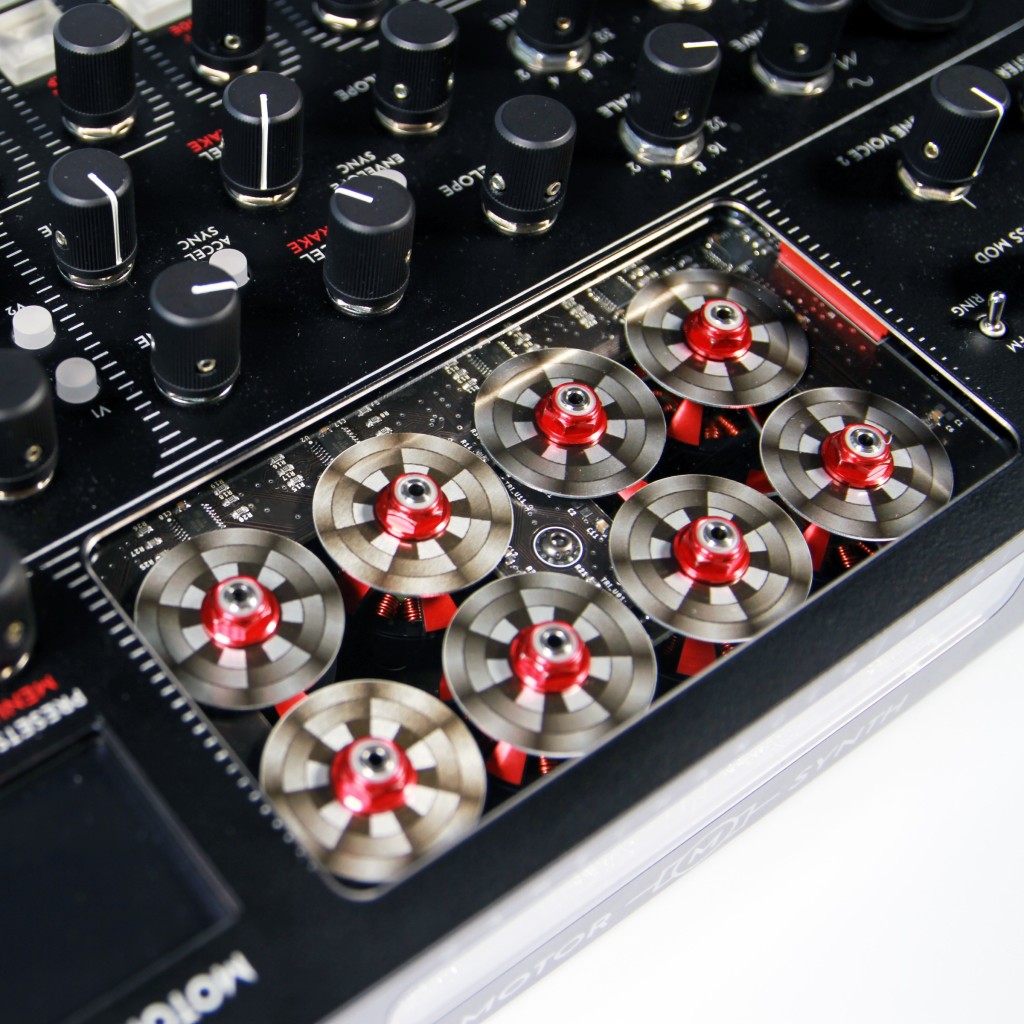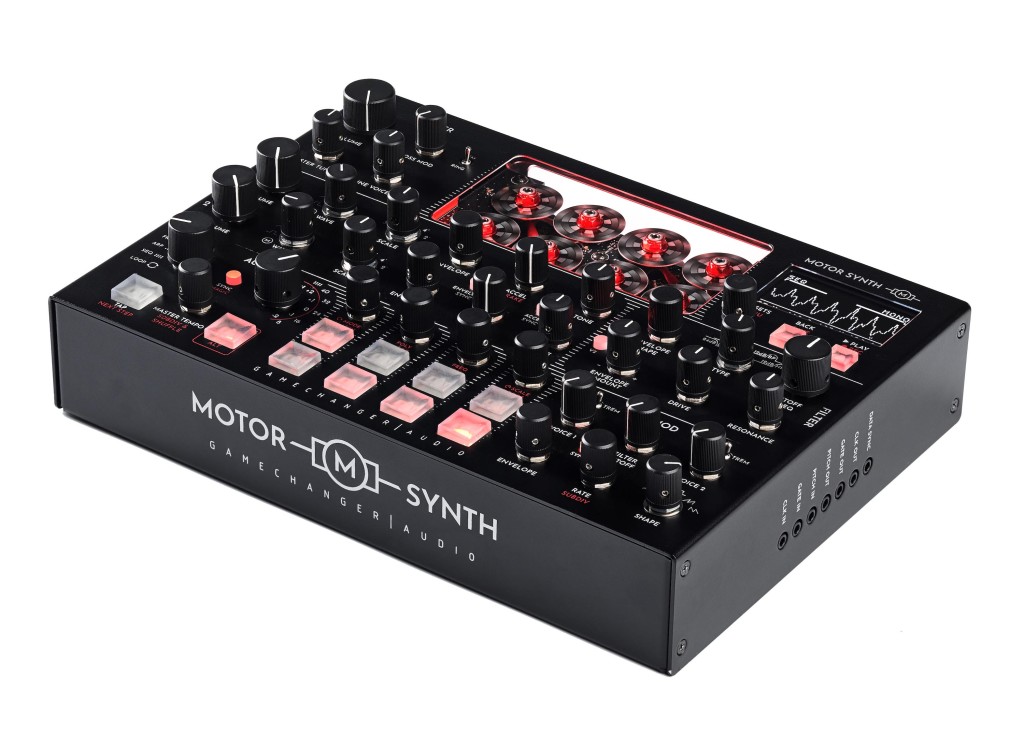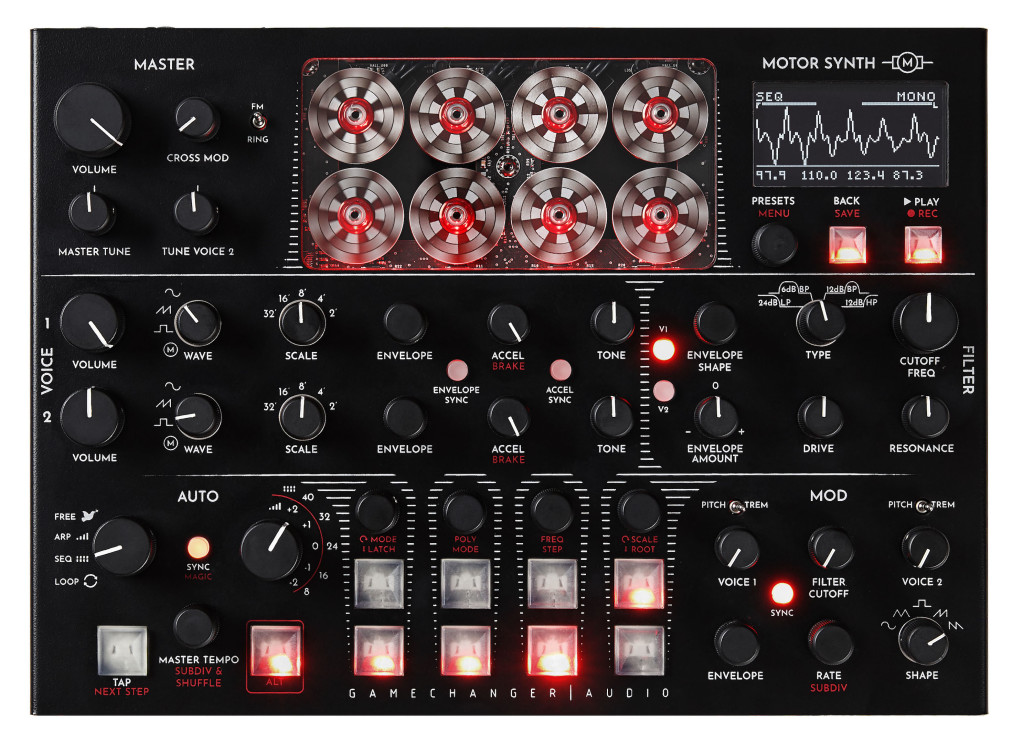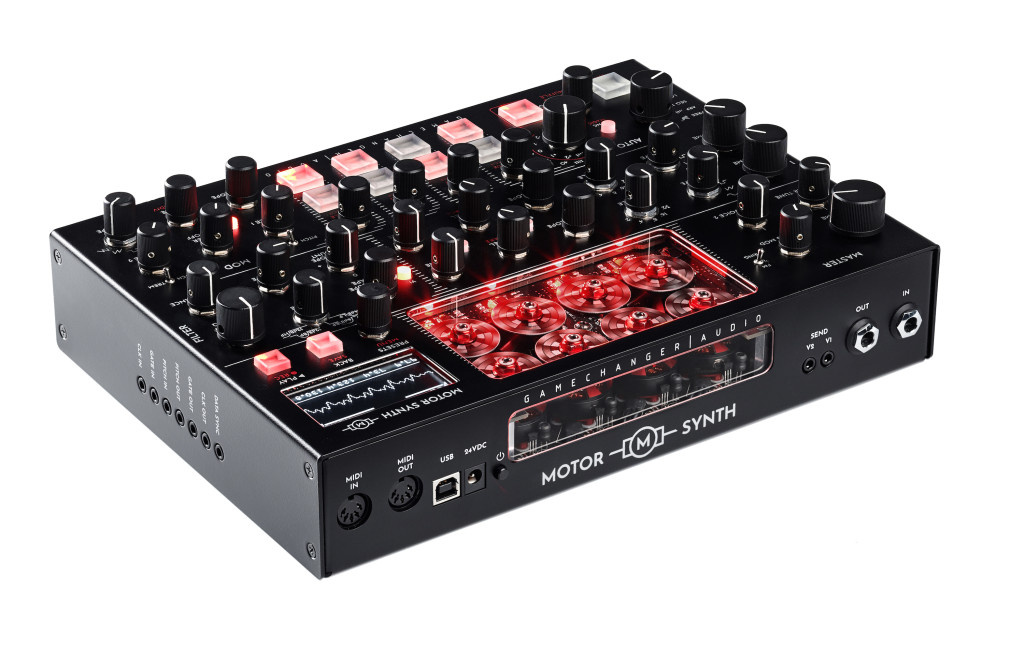Gamechanger Audio’s Motor Synth is a devastating industrial machine – with actual motors driving the sounds, all built in Latvia. Here’s everything you need to know about it, as this week is the end of its steep crowd funding discount.
Electro-magnetic induction is a technique beloved by noise artists and experimental sound creators – about 40 seconds into the promo video, you’ll see what happens when you run a power drill near an electric guitar.
The Motor Synth creators ask the question, what if you took that gnarly, unruly chaos, and packed it into a desktop synth? That makes this raw sound force and not only makes it more portable, but also more controllable. You can unleash the full power of electro-magnetic sonic destruction if you want, but you can also direct it into musical form.
The result is a unique combination of sound produced by mechanical motors and electro-magnetic energy, and musical, digital and electronic control.
https://www.indiegogo.com/projects/motor-synth#/
Gamechanger Audio also have the track record to pull off this kind of custom manufacturing. As with their other neighbors in the capital city of Riga, Latvia, Gamechanger benefit from having their engineering and design in an industrial city that’s newly reborn, and ready to work with innovative clients while literally speaking the same language. (That’s inside the European Union, in case you’ve been asleep since the 80s – sit down, there’s something huge I need to tell you about the USSR.) And they’ve made some exceptionally fine products, like the PLUS Pedal and PLASMA Pedal.
There are plenty of crowd-funded projects that seem to do it for the sake of it or for lack of a better idea. But the Motor Synth really does appear to be something where a crowd funding campaign, preorder style, enables a unique design. And in exchange, you get a steep discount – right now US$899 early bird instead of $1299.
So, what can you do with those motors?
The basic sound itself produces wild harmonics and overtones. There are eight motors, grouped into four-note polyphony – two motors/two voices per note.
The interesting twist is that there are two simultaneous synthesis methods build around the motor:
Magnetic pickups, for raw electro-mechanical chaos, and
Optical (infrared) sensors, which produce pitched signal by “reading” the discs’ motion visually
The optical approach echoes the optical synthesis approaches of early Russian pioneers and BBC Radiophonic Workshop innovator Daphne Oram. Check Derek Holzer’s terrific outline history of these optical tonewheels, or Moscow’s Andrey Smirnov. Smirnov in particular had championed a revived interest in these approaches – and Evgeny Sholpo’s Variophone, an early instrument that did what the Motor Synth did, at its most basic level. Like the Motor Synth, the Variophone employs mechanical, rotating disks.
Andrey’s presentations can become almost wistful in imagining an alternate history where optical and mechanical synthesis evolved instead of just today’s analog synths. Gamechanger are punching a hole through the multiverse and taking us into an alternative future.
Okay, but with that as the sound source, how does this actually become a synth and not just a sound art experiment? That’s where the Motor Synth comes alive:
Waveshape between three optical waveshapes and one (noisy!) inductive motor sound
Amplitude envelope
Accelerate, brake (your glide here is mechanical!)
Filter with drive
Modulation of voice envelopes (tremolo), pitch, filter
Onboard keyboard with scale, latch/momentary, and adjustable pitch – very analog
Mono, poly, unison modes
Arpeggiator, sequencer, loop modes
Digital recall of parameters
MIDI control of all parameters – you can even use MTS for microtuning, send MIDI CC, or assign velocity and aftertouch
It’s really pulling this together with the sequencing options, including slots for live-saving sequences, loops, and arpeggiators as motion sequencing as you play, that makes this a full-featured instrument. You’re limited to 4-voice polyphony, not 8-voice, but they are planning something called split mode for working with per-motor controls.
You also get not only the requisite MIDI, USB, and audio out I/O, but also audio input (which you can pitch track), separate sends pre-filter for inserting effects, CV (pitch/clock/gate), and more. Those features are evolving but already look terrific.
All in all, it’s a complete and new sonic toolkit, not just a simple synth with a weird motor gimmick. And having heard it live, it really comes alive – the properties of both the optical and electro-magnetic sound sources produce something that’s deeply organic and beautifully unpredictable.
Plus there’s a strobe light to make the whole thing look insanely cool.
Heck, even Jim Jarmush wants one:
There’s lots more information on the crowd-funding page, plus my favorite FAQ addition, which I’ll paraphrase – no, you don’t want to touch the motors, unless you like turning your fingers into a bloody mess. (I don’t want to know how you handle power tools, either.)



